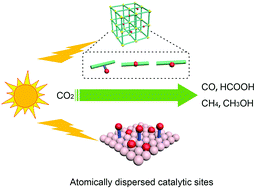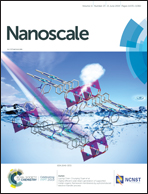Design of atomically dispersed catalytic sites for photocatalytic CO2 reduction
Abstract
Photocatalytic conversion of CO2 into carbonaceous chemical fuels and building blocks is an intriguing strategy for solving fossil energy crisis and reducing CO2 emission. Recently, development of atomically dispersed catalytic sites for photocatalytic CO2 reduction has sparked tremendous interest as their coordinatively unsaturated states, tunable electronic structures and well-defined active sites provide versatile knobs for tuning CO2 conversion. While this Minireview mainly highlights recent key developments in this important research field and elucidates the common fundamentals behind various materials systems, it also provides insights into the future development and emphasizes opportunities and challenges.

- This article is part of the themed collections: Editor’s Choice: Single-atom and nanocluster catalysis, Recent Review Articles and International Year of the Periodic Table : Single Atoms as Active Catalysts


 Please wait while we load your content...
Please wait while we load your content...